M
Leave a Legacy of Giving
You can support our mission of changing lives by saving sight in multiple ways!
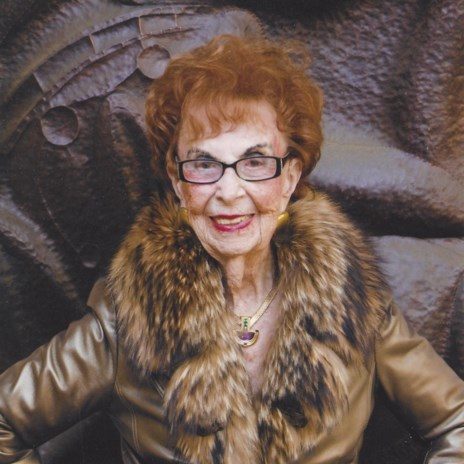
Kansas City artist, Gabriella Mountain, was most well known for her larger-than-life abstract sculptures, mosaics, and stained-glass pieces. As an artist, she was diverse in her craft, creating commissioned works throughout the Kansas City area, including the old Main Library’s mosaic floor at 12th and McGee and the stained-glass windows at the Whiteman Air Force base chapel. Gabriella lived a remarkable and storied life, beginning in Hungary in 1918. After fleeing from war-torn Europe at the end of World War II, she came to America and started her life and career as an artist in the City area.
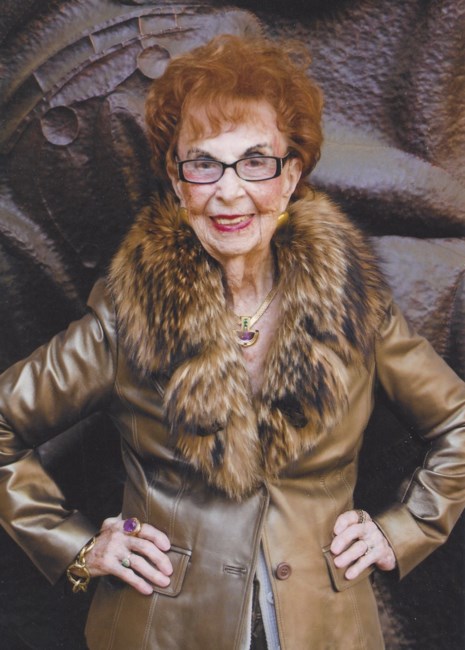
Gabriella Mountain, via Dignity Memorial
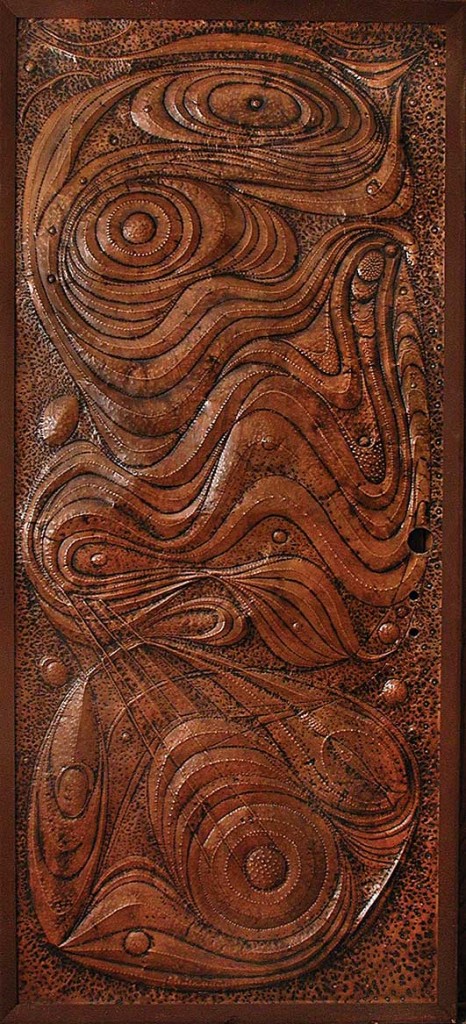
Dragons repousse door, via KCStudio
While she was a well-established and awarded artist, Gabriella’s struggle with vision loss was lesser-known. After suffering from Fuchs’ Corneal Dystrophy for years, Gabriella received a sight-restoring corneal transplant surgery in March of 2013. While she was 95 years old, the transplant improved her vision, allowing her to continue creating beautiful works of art. In her later years, Gabriella transitioned from creating metal sculptures to abstract textile and fiber art.
After a long and beautiful life, Gabriella passed away in May 2020 at the age of 102. In gratitude for the gift of sight, she left a gift to Saving Sight to continue our work restoring sight to others. We remember Gabriella in memoriam for her vision as an artist and her vision to serve others by supporting Saving Sight.
If you are interested in making a gift to change lives by Saving Sight, please visit saving-sight.org/give or reach out to our communications team to discuss leaving your legacy with a planned gift.
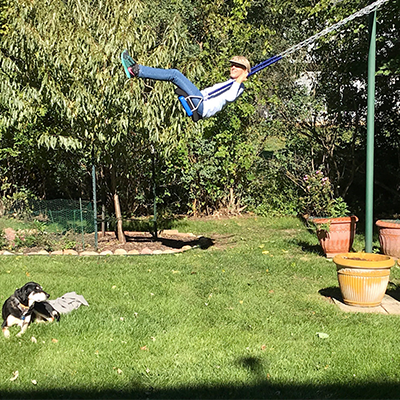
“One of my favorite things to do is swing on the 10-foot-tall swing in my backyard,” says Carol. “I go on it every day and as I’m swinging, I can see everything going on and all the changes in the seasons. Every time I do it, I see something new in my yard and my neighborhood – it’s even better now after my surgeries. It’s my relaxation and my mediation.”
After years of battling the progressive eye disease Fuchs Dystrophy, Carol’s sight was restored through corneal transplantation.

Carol’s Experience with Corneal Transplantation
“I inherited Fuchs Dystrophy from my father, who endured two unsuccessful corneal surgeries in the years before tissue transplants were available. Back when my dad had it, this new technology had not yet been developed. He endured a much more invasive surgery and it didn’t work. The whole thing was terrible for him and I was nervous to get it done. I dealt with that condition for many, many years and tried to treat it with eye drops for 15 years,” she says.
Eventually, Carol realized she needed to have surgery and scheduled an appointment during the middle of the pandemic. She was scared because of her father’s experience but was uncomfortable because her vision was so impaired, and her corneas had become scratchy and dry. “One of my corneas had even blistered,” she adds. Her friend, Dr. Cindy Penzler, who is a respected ophthalmologist in Topeka, recommended she reach out to Dr. Timothy Cavanaugh with Cavanaugh Eye Center in Overland Park, KS for a consultation.
“As soon as I met with Dr. Cavanaugh and went through the extensive eye exam I knew I was in good hands. I was impressed by how educated he is, his passion for it, and his fantastic staff. He just made me feel that confident,” says Carol. “Dr. Cavanaugh’s process is so unique because, not only is he experienced and efficient with DSAEK corneal transplantation, but he was the only surgeon I could find to do simultaneous cataract and corneal procedures. That made it 2 surgeries instead of 4, since I had cataracts on both eyes and needed both corneas replaced. It’s amazing how complicated it is but how well he does it.”
One thing Carol found interesting during her initial exam was viewing the image of a healthy cornea compared to her cornea. Where you can see a cornea full of cells in the healthy cornea, the image of her cornea was just black. Dr. Cavanaugh came in and explained to Carol that was because you could literally see just a few cells left on her cornea.
After her surgery, Dr. Cavanaugh told Carol her donor was a “super donor” explaining that at birth the cornea has 3,000 cells and at death it’s usually around 2,000. Her donor’s cornea had 2,900 cells – and Carol’s diseased cornea had virtual none.
“You can imagine because of that it was a miracle for me. Within 2 to 3 days of the surgery I was seeing better than I ever had and I was still healing. It was life-changing! I was like a kid who just woke up from a black and white dream. Brighter, clearer and truer. And you have to remember I had the cataract surgery as well. When I went back to the next appointment one week later, they said I healed faster than most and I thank my super donor for that.”
After her first surgery in June, Carol had her second cornea transplant in August. “I may still need a prescription at some point but right now I can read and drive without glasses and hadn’t been able to in 30 years – that’s a win for me.”
For Carol, the process has been easy, and her surgeon did everything they could to make her comfortable during the procedure. “After meeting Dr. Cavanaugh, my attitude was I couldn’t wait to get this done. It was all outpatient and I had faith in Dr. Cavanaugh. It was maybe 2 hours at most. Everyone was friendly and upbeat. Nothing about it provided anxiety, pain or nervousness for me. I tend to be someone who can relax myself well though. The only thing that was a little difficult was keeping my head flat/back for 48 hours after to hold cornea transplant in place.”
Life After Restored Vision
Today, Carol is retired after working a majority of her life for an internet publishing company where she sold online and print advertisements for technology companies. Her first grandchild was born in early October. “I got to hold him and look at his face through clear eyes and see it so clearly and feel it so deeply, much more so than I would have before the surgery,” she says.
Reading for Carol is also number one and has been so enhanced by her cornea transplants. “The best thing for me is for the first time in probably 30 years I don’t have to have glasses to read. I read all the time. And I volunteer for the audio reader programmer and it provides a 24/7/365 radio service for the blind and reading impaired. This lets me continue that so much easier. I read and record live shows and newspaper stories for an hour every day. Every single thing in my life is enhanced by good eyesight,” Carol adds.
Connecting through Correspondence
Following her transplants, Carol received a letter in the mail about Saving Sight’s Correspondence Program. “I was so happy to get the letter from Saving Sight about correspondence because I was thinking to myself, how do I thank the person who did this for me – what it has meant to me to be able to see so much better? This allowed me to say thank you to the donor family. I wouldn’t have had access to that information if I wouldn’t have received that letter. I realized it went beyond Dr. Cavanaugh. It began with the donor and it was so nice to be able to close that loop for me and let them know how much I appreciated their loved one being open to donation, to tell them this is what happened. It saved my sight.”
“And I’m just very deeply appreciative of the work that Saving Sight does as well. I can never thank Dr. Cavanaugh or the donor enough for this second lease I have on life. This was a 100 percent uplifting experience for me during the worst pandemic of our lifetime.”
Learning About Organ, Eye and Tissue Donation
“I’m listed as an organ donor and had never thought about eye donation before this. It wasn’t until my surgeries that I thought about this and I just found it so amazing. I have a whole lot of respect for doctors, and researchers and those in the industry who are advancing this field,” says Carol.
“It’s so needed because there are so many common eye diseases that could use corneal tissue to help the patient. It’s a huge contribution people can make through donation – if you contribute nothing more than cornea tissue you have made a significant difference in the lives of others.”
You can join the national registry or learn more about organ eye and tissue donation at registerme.org.
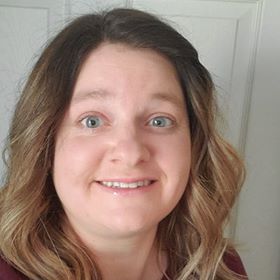

After 5 years of having issues seeing clearly out of her left eye, Kristie was able to receive a corneal transplant on March 19, 2018. Kristie’s vision had deteriorated due to corneal disease.
“It just got worse and worse as time went by to where contacts or glasses would not correct it! I was in surgery for 5 hours,” says Kristie, who was 34 and a stay-at-home mom at the time of her transplant. “After surgery, I was told to wear an eye patch for 1 day, but I ended up needing to wear it for a few days as my eye was sensitive to light. My eye was sore for a few weeks and slightly watery and bloody looking. I could not bend down or lift anything more than 25 pounds for 6 weeks and I had to use 2 eye drops after surgery for a month – an antibiotic drop and a sterile drop.”
Dr. Shachar Tauber was Kristie’s corneal surgeon. “He is a great doctor,” she says. “I would suggest him to anyone who lives in that area. He was very informative to my husband during surgery and after and he even checked on me after surgery and told me to let him know anytime I needed anything. I will go back to him again if I have any more eye problems in the future.”
Kristie adds she also had checkups with her eye doctor, Dr. Hood, every 2 weeks for a month then every month for 11 months to have stitches removed. “I had 16 stitches and they took them out 2 or 3 stitches at a time. I recovered nicely with no complications! Each time I have doctor’s appointment my sight gets better and better!” She’ll continue to have follow-up appointments at least once a year. “There is also a little pin hole black dot on my left iris that will be there for the rest of my life, so it helps my eye drain,” she says.
“It’s awesome and I’m thankful,” says Kristie. “I can actually see better than my right eye now which is interesting because my right eye used to be my ‘helping me see eye’.
“Before my transplant, I could not see anything, and everything was foggy in that eye. I couldn’t even see words on the TV. I can now see in a hard contact. I have to wear a contact because I have astigmatism in both eyes. Before I could not wear a contact and see through it.” Kristie adds that she was born hard of hearing and the corneal transplant has helped her so much to see better and navigate her day-to-day life. She and her husband are even going to the gym and exercising together now.
Connecting Through Correspondence
Prior to Kristie’s transplant, she didn’t have a connection to organ, eye and tissue donation. Through the process she says she’s learned a lot. “It sure makes a difference to someone’s life. Without a transplant, some can’t see or live better lives. Some could even die.” Kristie chose to write a thank you letter to her donor family as well. “I just wanted to say thank you for their loved one’s precious gift.”
Because of her experience Kristie has signed up to be a donor on her driver’s license to help others. You can join the donor registry at registerme.org or at your local DMV.
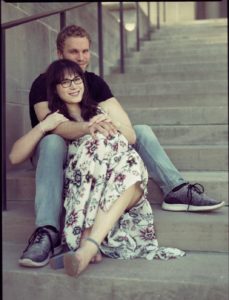

“In late July 2016, I had a corneal abrasion on my right eye that sealed to form an ulcer covering my entire cornea,” says Chris. “My ophthalmologist put me on a regiment of fortified Vancomycin and Tobramycin to be taken every hour for two weeks. After two weeks of unrelenting agony and exhaustion, the ulcer had not decreased in size, and it was determined that a transplant had to occur.”
On August 5, Dr. Fraunfelder performed a cornea transplant in Chris’s right eye. “Though there was immediate relief from any pain, it took about two weeks for my eye to be able to be reopened. Since then, I’ve had to have a fitted solid contact lens, and have to take a steroid eye drop every day, but my vision has returned to normal. I’m extremely thankful for the team at University Hospital who helped me through this process and extremely thankful for Dr. Fraunfelder for performing the surgery.”
Chris says his surgery experience was a typical outpatient procedure. “Having the stitches removed a year later was more stressful, and even that was easy,” he says.
“It’s nice not having to wake up every hour on the hour in agony to squirt drugs in my eye. I was essentially bed-ridden during this time, unable to go to work, and underneath quite a bit of stress due to feeling completely shut out,” says Chris.
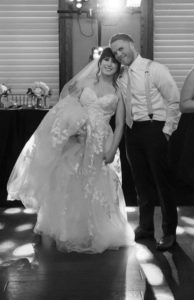
Julie and Chris on their wedding day.
Chris and his wife Julie are both advocates for organ, eye and tissue donation. “Without this surgery, I’m not sure how my quality of life would be,” says Chris. “As a freshman, I worked with an on-campus organ donation group called Donate Life, raising money and awareness for organ donation. Though I’ve always been an organ donor, this put into perspective exactly how important it is that people are in favor of donating.”
“While working as a recovery technician, I’ve discovered a large part of the public are anti-donation or just not registered donors due to common misconceptions, while many people wait for the opportunity to receive a donation that will drastically change their lives,” adds Julie. “I have always been very pro-donation, but had no personal association before Chris’s transplant.”
Julie has been a recovery technician with Saving Sight since this summer. She applied because she enjoyed the uniqueness of the job and wanted to use her medical experience to make a positive impact in her society/community.
“Each case is so unique; it keeps me growing as an individual and professional continually,” she says. “Being able to make such a difference in people’s lives is fulfilling, but the community that is Saving Sight was so unexpected and has meant so much. I love getting to spend time with my coworkers.”
Chris and Julie are thankful to the many individuals who have chosen to give the gift of sight. “It is very respectful of the donor and their loved ones and can not only save a life but comfort the donor’s loved ones.”
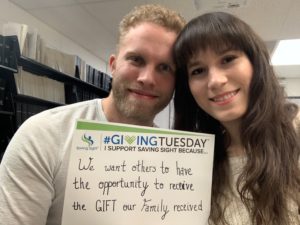
Chris and Julie with their #GivingTuesday #UnSelfie sign.
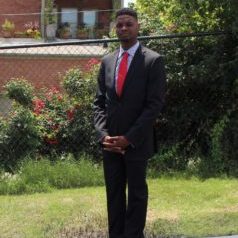
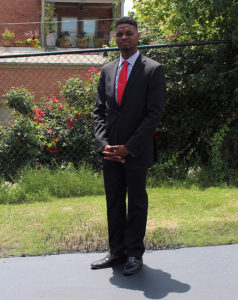
The surgery was successful in removing the cataract and it didn’t leave me blind, but it made my vision worse. However I never told anyone because I didn’t want to feel like a burden.” A few years later, Casey told his family and eye doctors that his vision had worsened in his left eye. His doctors told him that a cornea transplant was needed to restore his vision. Casey, now twenty-one years old, says his experience with his cornea surgery was a little frightening. “My doctors had given me so much hope, however I was fearful the surgery would not be successful – I was scared to believe.”
Casey’s cornea transplant was a success and his vision is continuing to improve during his healing process. “One of my favorite things to do is play video games and before my transplant I had to literally sit right in front of the television in order to see the game more clearly, but now I do not have to be so close,” says Casey. He can now see things further away as well. He is able to see road signs more clearly and looks forward to his doctors clearing him to drive. Prior to his transplant, he also had to have large font and use a magnifying glass on his phone. Now he enjoys putting his phone in standard mode to view his text messages. 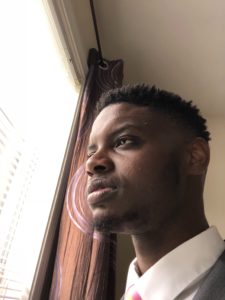
Organizations like Saving Sight are helping to restore sight to those like me who need it.” He adds that when it comes to donating, it’s about saving a life; it’s about restoring someone’s way of living and giving them hope for a better future. Casey chose to write a letter thanking his donor family as well. “After my cornea transplant I was approached about writing a letter to my donor family and I just loved the idea. Because of their family’s sacrifice, I am now able to see clearly and I just wanted to tell them thank you for what they have done for me.” I’m just grateful to my doctors who were amazing and who gave me hope and inspired me and to the donor family who during their tragedy and loss chose to donate. And I’m also very thankful to my family who are awesome people, drove me when I couldn’t drive, and took off work to come to my appointments.”
Casey has designated his decision to join the donor registry at his local DMV. “I love to help people and so on my license I chose to be a donor because I believe if someone is out there who needs it then why not donate?” You can join Casey by registering to be an organ, eye and tissue donor at your local DMV or at registerme.org.
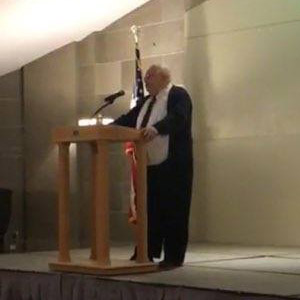

On April 9th, Saving Sight was honored to take part in Donor Family Recognition Day at the Missouri State Capitol. During the event, donor families were honored by the Governor and were also introduced on the House floor. We also had the great privilege of having one of our cornea recipients, retired Judge Gary Schmidt, speak at the event to share about the impact corneal transplantation has had on his life.
Schmidt finds it very meaningful to speak at events like this. “It gives me an opportunity to express my gratitude to the families of donors of all types. Donors have done so much to improve the lives, perhaps save the lives of others. It is a privilege to say ‘Thank you!’ I’m not able to find the words to adequately express the debt of gratitude we owe them.”
“Donors have done so much to improve the lives, perhaps save the lives of others. It is a privilege to say ‘Thank you!’ I’m not able to find the words to adequately express the debt of gratitude we owe them.”
Gary Schmidt, Cornea Recipient
Saving Sight: Judge Schmidt, can you tell us about your experience with corneal transplantation?
Schmidt: What I remember most is the fear. When my corneas both went bad at the same time, I was almost completely blind. It happened in a few short days, and I wasn’t prepared for the possibility I might be sightless for the rest of my life.
Saving Sight: What caused you to require a transplant?
Schmidt: My corneas both failed from a combination of diabetes, age and bad genes.
Saving Sight: What was your transplant experience like?
Schmidt: Unfortunately, it didn’t go smoothly. Dr. Leutkemeyer elected to do my left eye first and, after being placed, the graft moved out of position. It took several trips to surgery before the graft took and held. The right eye went much more smoothly, and I was seeing quite well within a few days.
Saving Sight: Did you have a connection to organ, eye and tissue donation prior to your transplant?
Schmidt: When I was first out of law school, an old high school classmate took on a project of signing up many bone marrow transplant donors. I was one of her targets. The idea didn’t take much selling; registering as a bone marrow donor might save a life. So I registered, and got an immediate preliminary match. Unfortunately further testing showed we were not compatible. Ultimately, several of my high school classmates did indeed donate bone marrow.
Saving Sight: What’s something you learned about the donation process through your experience?
Schmidt: I am constantly amazed at the things that may be donated, both while the donor is living and postmortem.
Saving Sight: What is something you’d like others to know about the process?
Schmidt: I would hope that everyone is aware of how much donation can change the world for a person, for a family. In my case, my donor gave me the gift of sight. Some donors are able to save lives.
Saving Sight: What are some things you enjoy to do and are able to do now that your sight is restored?
Schmidt: If I couldn’t see, I’d be a huge burden to my family. The gift of sight gives me independence, and keeps me from being a burden to them. I can now do all the things I enjoy, including going to high school football games and reading. It was always my dream to spend retirement reading all the things I never had time to read when I was working full time.
Saving Sight: What caused you to write to your donor family through our Correspondence Program?
Schmidt: Considering what my donor did for me, how could I not try and express my gratitude for their relative that did so much for me? In my case, I hope they are proud of the very good things their donor was able to accomplish. They should be very proud of him.
Saving Sight: Why is speaking at events like Donor Day at the Capitol meaningful to you as a cornea recipient?
Schmidt: It gives me an opportunity to express my gratitude to families of donors of all types. Donors have done so much to improve lives, perhaps save the lives of others. It is a privilege to say “Thank you!” I’m not able to find the words to adequately express the debt of gratitude we owe them.
Saving Sight: Is there anything else about your experience you would like to mention?
Schmidt: I think it must be incredibly satisfying to work with an agency (Saving Sight) that does so much good. Before my eyes failed I was vaguely aware that someone must be tending to such things. Now I can put smiling faces to some of the people who are doing such incredible work.